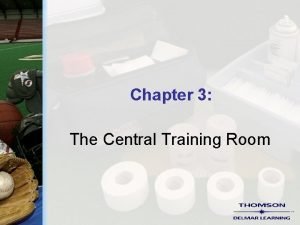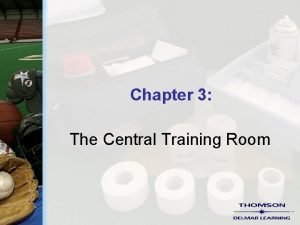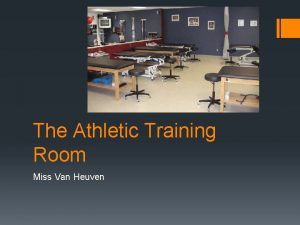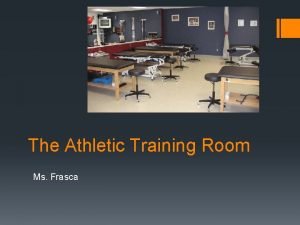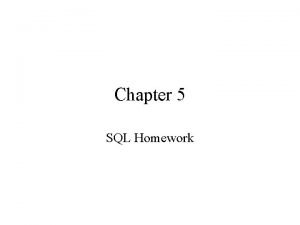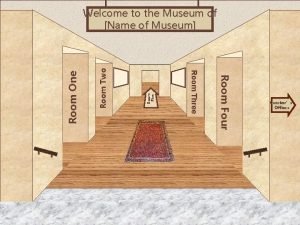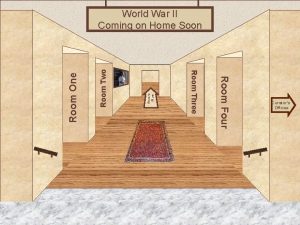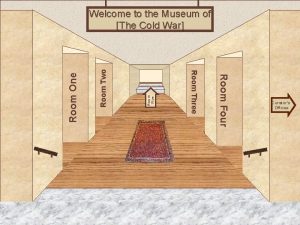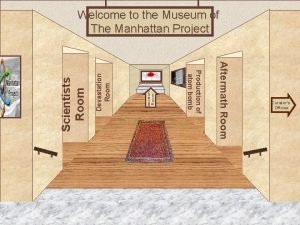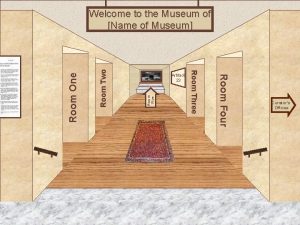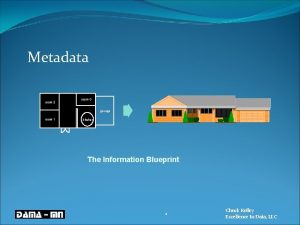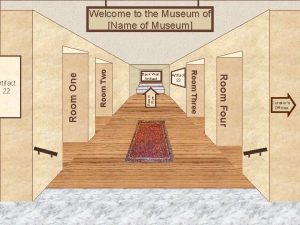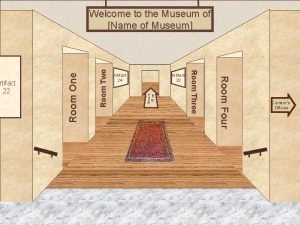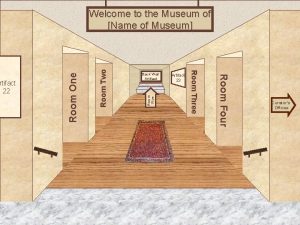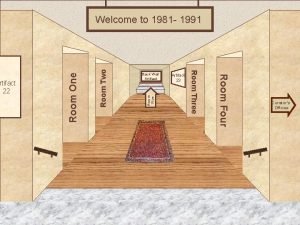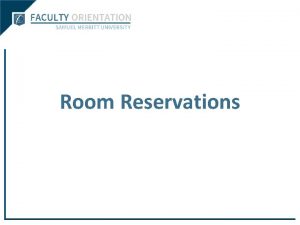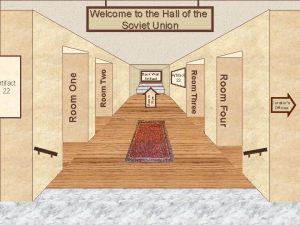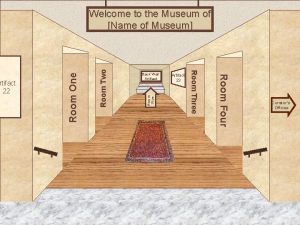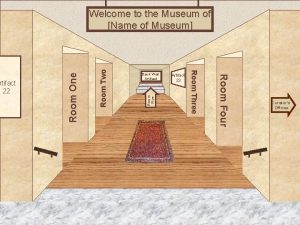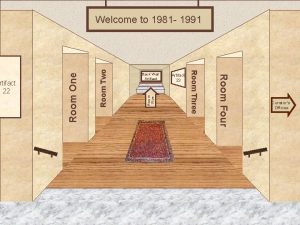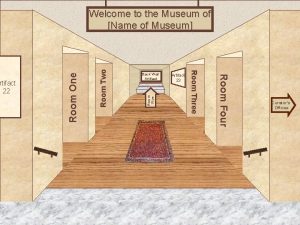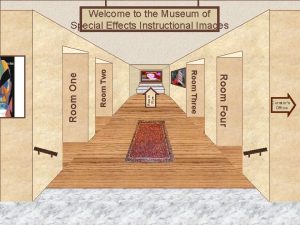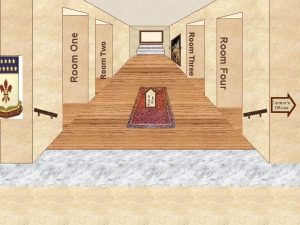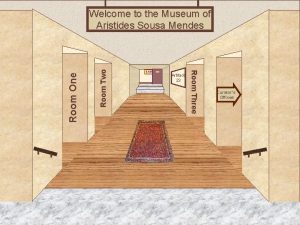Chapter 3 The Central Training Room Central Training










































- Slides: 42

Chapter 3: The Central Training Room

Central Training Room § A Multipurpose facility designed to accommodate a variety of athletic training needs § The central training room must be easily accessible to both male and female athletes. Copyright © 2004 by Thomson Delmar Learning. ALL RIGHTS RESERVED. 2

Rules of Operation for and Athletic Healthcare Program § Must develop policies and procedures – Delineate daily routine of program § Define scope of program – Who will be served by program? – Athlete: to what extent and what services will be rendered – Institution: who else can be served medically and educationally and what are the legalities

Providing Coverage § Facility Personnel Coverage – Budgetary concerns may be a limiting factor – What personnel are available? § Sports Coverage – Different institutions (including high schools) have different levels of coverage based on personnel and risks involved with sports

Athletic Training Room Policies § Facility should be used only for prevention and care of sports injuries § Rules must be established in the interest of sanitation § Policies regarding environmental conditions and emergency protocols should also be set

Hygiene and Sanitation § Rules concerning room cleanliness and sanitation must be set and made known to population using facility – Examples • • • No equipment/cleats in training room Shoes off treatment tables Shower prior to treatment No roughhousing or profanity No food or smokeless tobacco § Must adhere to OSHA standards and guidelines

– Cleaning responsibilities are divided between athletic training staff and maintenance personnel – Division of responsibilities – Maintenance crew • Sweep floors daily, clean and disinfect sinks and tubs, mop hydrotherapy room, empty waste baskets – Athletic Training staff • Clean treatment tables, disinfect hydrotherapy modalities daily, clean equipment regularly

Establishing Health Habits for the Athlete § Promotion of good health and hygiene is critical • Are the athletes cleared to participate? • Is each athlete insured? • Does the athlete promptly report injury and illnesses? • Does the athlete follow good living habits? • Do they avoid sharing clothes and towels? • Does the athlete exhibit good hygiene practices? • Does the athlete avoid common drinking sources?

Emergency Telephones § Accessibility to phones in all major areas of activity is a must § Should be able to contact outside emergency help and be able to call for additional athletic training assistance § Radios, cell and digital phones provide a great deal of flexibility

Injury Reports § Injury reports serve as future reference § Reports can shed light on events that may be hazy following an incident § Necessary in case of litigation § All reports should be filed in the athletic training room

Treatment Log § Sign-in to keep track of services § Daily treatments can be recorded § Can be used as legal documentation in instances of litigation § Subject to HIPAA and FERPA regulations

Injury Evaluation and Progress Notes § Injured athlete should be evaluated by an athletic trainer or physician – Record of the evaluation should be kept § If not available, a coach should encourage athlete and parents to set appointment with a local physician for injury assessment, diagnosis and documentation.

Supply and Equipment Inventory § Managing budget and equipment/supplies is critically important § Inventory must be taken yearly in order to effectively keep track of: – New equipment that is needed – Equipment that needs to be replaced – Equipment needing to be replenished

Annual Report § Summary of athletic healthcare function § Can be used to evaluate/recommend potential changes for program § Includes number and types of injuries seen/treated

Budgetary Concerns § Size of budget? ? § Different settings = different size budgets and space allocations § Equipment needs and supplies vary depending on the setting (college vs. high school) § Continuous planning, inventory and prioritizing is necessary to effectively manage monetary allocations to meet programmatic goals

Ordering Supplies and Equipment § Expendable items – Supplies that cannot be reused- first aid and injury prevention supplies § Equipment – Items that can be used for a number of years – Fixed (remain in the training room- ice machine, tables) – Non-fixed (crutches, coolers, training kits) § Yearly inventory and records must be maintained in both areas

Additional Budget Considerations § Other operating costs – Telephone and postage expenses – Contracts for outside services – Purchases relative to liability insurance and professional development Purchasing Systems § Direct buy vs. competitive bidding

Organization § The central training room should be organized for efficient use of the space available. § Ideally, 1200 square feet is suitable § Realistically, most schools have about 400 – 800 square feet. § Should have good lighting for proper exams and treatment Copyright © 2004 by Thomson Delmar Learning. ALL RIGHTS RESERVED. 18

Organization § Ground Fault Interrupters (GFI) must be used in areas near water. § Must have proper ventilation and heating § Must have telephone access § Great storage space § Office Space Copyright © 2004 by Thomson Delmar Learning. ALL RIGHTS RESERVED. 19

Facility Design § Design will vary drastically based on number of athletes, teams, and various needs of the program § Size – Varies between settings – Must take advantage and manage space effectively – Interact with architect relative to needs of program and athletes • Existing space or newly designed

§ Location – Outside entrance (limits doors that must be accessed when transporting injured athletes) – Double door entrances and ramps are ideal – Proximity to locker rooms and toilet facilities § Distinct areas – Taping and bandaging – Injury treatment with rehabilitation equipment and/or therapeutic modalities – Wet area (whirlpools, refrigerator, ice machine) – Office space 21

§ Storage Facilities – Training rooms often lack ample storage space – Storage in training room that holds general supplies and special equipment – Storage available in the specified areas of the training room – Large walk-in storage cabinet for bulk supplies – Refrigerator for equipment, ice cups, medicine and additional supplies

Wet Area § Refrigerator, Ice machine, whirlpool and Hydrocollator § Must be separate with special flooring and a floor drain. Copyright © 2004 by Thomson Delmar Learning. ALL RIGHTS RESERVED. 23

Taping § The taping area is the most used space of the central training room. § Taping area should hold 4 -6 tapping tables § The size and type of tables is up to the athletic trainer on staff. Copyright © 2004 by Thomson Delmar Learning. ALL RIGHTS RESERVED. 24

Exercise and Rehab § Access to an exercise area in the central training room allows athletes to work out under supervision. § Should hold various exercise machines and weights for rehab purposes. Copyright © 2004 by Thomson Delmar Learning. ALL RIGHTS RESERVED. 25

Copyright © 2004 by Thomson Delmar Learning. ALL RIGHTS RESERVED. 26

Staff § Staff varies from school to school § Most HS have one or two staff athletic trainers § Colleges can have anywhere from 1 -20 staff athletic trainers § HS have many student athletic trainers § Colleges have a selection of 10 student athletic trainers per level. Copyright © 2004 by Thomson Delmar Learning. ALL RIGHTS RESERVED. 27

Central Training Room Rules and Procedures § All injuries are to be reported to the training staff, regardless of severity § Treatments are given only after training staff approval § Treatments are continued until cleared by medical staff Copyright © 2004 by Thomson Delmar Learning. ALL RIGHTS RESERVED. 28

Central Training Room Rules and Procedures (cont. ) § Athletes are not to treat themselves § No horseplay or improper language allowed § Appropriate dress required: shirt, shorts, shoes § No cleats allowed Copyright © 2004 by Thomson Delmar Learning. ALL RIGHTS RESERVED. 29

Central Training Room Rules and Procedures (cont. ) § Do not move any supplies without the trainer’s permission § All athletes must sign in before receiving treatment § Return all loaned items to the training room § No food or drink allowed Copyright © 2004 by Thomson Delmar Learning. ALL RIGHTS RESERVED. 30

Central Training Room Rules and Procedures (cont. ) § No use of training equipment without prior approval § The telephone is not for personal use § Only athletes being treated and their coaches are allowed in the training room § Attend and work at the athletic contests and practices assigned Copyright © 2004 by Thomson Delmar Learning. ALL RIGHTS RESERVED. 31

Central Training Room Rules and Procedures (cont. ) § Complete daily jobs as assigned § Athletes are not to bring their bags or other nonessential personal items into the training room § Do not leave the training room or office open if no one will be in the training room § Supervise all treatments Copyright © 2004 by Thomson Delmar Learning. ALL RIGHTS RESERVED. 32

Central Training Room Rules and Procedures (cont. ) § Wear gloves whenever your work might involve contact with bodily fluids § Wash your hands after working with each athlete § Document every injury Copyright © 2004 by Thomson Delmar Learning. ALL RIGHTS RESERVED. 33

Medical Kit § Supplies include – Adhesive tape – Analgesics – Antibacterial/Antiseptic cream – Antimicrobial hand wipes – Applicators, cotton-tipped – Bandage scissors and/or tape cutters Copyright © 2004 by Thomson Delmar Learning. ALL RIGHTS RESERVED. 34

Medical Kit (cont. ) § Supplies include – Bandages – Biohazard bags – Cold pack, instant – Contact lens kit – Emergency contact information for athlete – Eyewash, sterile solution Copyright © 2004 by Thomson Delmar Learning. ALL RIGHTS RESERVED. 35

Medical Kit (cont. ) § Supplies include – Foot powder – Gauze pads, sterile – Gloves, latex – Heel cups – Hydrogen peroxide – Mirror with plastic holder Copyright © 2004 by Thomson Delmar Learning. ALL RIGHTS RESERVED. 36

Medical Kit (cont. ) § Supplies include – Moleskin – Mouth shield or CPR protector – Pencil and paper – Plastic bags for ice – Roller gauze – Saline solution/eyewash – Scissors Copyright © 2004 by Thomson Delmar Learning. ALL RIGHTS RESERVED. 37

Medical Kit (cont. ) § Supplies include – Skin lubricant or petroleum jelly – Sling or triangular bandage – Tape adherent – Thermometer – Tongue depressors – Underwrap – Wraps, elastic Copyright © 2004 by Thomson Delmar Learning. ALL RIGHTS RESERVED. 38

Sharps Container § Sharps equipment includes scalpel blades, razors, uncapped syringes, and needles. Copyright © 2004 by Thomson Delmar Learning. ALL RIGHTS RESERVED. 39

OSHA § The Occupational Safety and Health Administration (OSHA) establishes federal standards for prevention of work-related injury associated with exposure to bloodborne pathogens. Copyright © 2004 by Thomson Delmar Learning. ALL RIGHTS RESERVED. 40

OSHA Regulations § Exposure control plan must be on hand. § Staff are trained about bloodborne pathogens. § All exposures are documented and reported. § Personal protective equipment is available to staff. Copyright © 2004 by Thomson Delmar Learning. ALL RIGHTS RESERVED. 41

OSHA Regulations (cont. ) § Hepatitis B vaccine is offered to all at-risk staff. § There are special containers for biohazardous materials and sharps. § All staff members follow standard precautions. § Proper disinfection techniques are used to clean tools and work surfaces. Copyright © 2004 by Thomson Delmar Learning. ALL RIGHTS RESERVED. 42
 Let's look at some examples
Let's look at some examples Central training room
Central training room Central
Central Central training room
Central training room Central training room
Central training room What is core design
What is core design Bedroom kitchen bathroom
Bedroom kitchen bathroom Room nineteen summary
Room nineteen summary Hotel database sql queries
Hotel database sql queries Tceq central file room online
Tceq central file room online Hình ảnh bộ gõ cơ thể búng tay
Hình ảnh bộ gõ cơ thể búng tay Lp html
Lp html Bổ thể
Bổ thể Tỉ lệ cơ thể trẻ em
Tỉ lệ cơ thể trẻ em Voi kéo gỗ như thế nào
Voi kéo gỗ như thế nào Tư thế worm breton là gì
Tư thế worm breton là gì Bài hát chúa yêu trần thế alleluia
Bài hát chúa yêu trần thế alleluia Môn thể thao bắt đầu bằng từ đua
Môn thể thao bắt đầu bằng từ đua Thế nào là hệ số cao nhất
Thế nào là hệ số cao nhất Các châu lục và đại dương trên thế giới
Các châu lục và đại dương trên thế giới Công thức tính thế năng
Công thức tính thế năng Trời xanh đây là của chúng ta thể thơ
Trời xanh đây là của chúng ta thể thơ Mật thư tọa độ 5x5
Mật thư tọa độ 5x5 Phép trừ bù
Phép trừ bù độ dài liên kết
độ dài liên kết Các châu lục và đại dương trên thế giới
Các châu lục và đại dương trên thế giới Thơ thất ngôn tứ tuyệt đường luật
Thơ thất ngôn tứ tuyệt đường luật Quá trình desamine hóa có thể tạo ra
Quá trình desamine hóa có thể tạo ra Một số thể thơ truyền thống
Một số thể thơ truyền thống Cái miệng xinh xinh thế chỉ nói điều hay thôi
Cái miệng xinh xinh thế chỉ nói điều hay thôi Vẽ hình chiếu vuông góc của vật thể sau
Vẽ hình chiếu vuông góc của vật thể sau Nguyên nhân của sự mỏi cơ sinh 8
Nguyên nhân của sự mỏi cơ sinh 8 đặc điểm cơ thể của người tối cổ
đặc điểm cơ thể của người tối cổ Ví dụ về giọng cùng tên
Ví dụ về giọng cùng tên Vẽ hình chiếu đứng bằng cạnh của vật thể
Vẽ hình chiếu đứng bằng cạnh của vật thể Vẽ hình chiếu vuông góc của vật thể sau
Vẽ hình chiếu vuông góc của vật thể sau Thẻ vin
Thẻ vin đại từ thay thế
đại từ thay thế điện thế nghỉ
điện thế nghỉ Tư thế ngồi viết
Tư thế ngồi viết Diễn thế sinh thái là
Diễn thế sinh thái là Dạng đột biến một nhiễm là
Dạng đột biến một nhiễm là Bảng số nguyên tố
Bảng số nguyên tố

